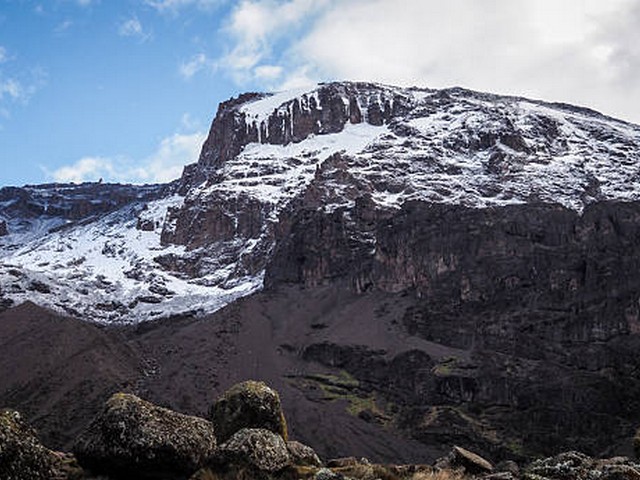Kilimanjaro Trekking Gear For Backpackers: Your Ultimate Guide
Embarking on a trek to the majestic Mount Kilimanjaro is an adventure of a lifetime. As the highest peak in Africa, Kilimanjaro calls to adventurers from around the globe with its stunning vistas and the promise of standing atop the "Roof of Africa." However, the key to a successful climb is preparation, particularly in choosing the right trekking gear. At the Kilimanjaro Centre for Trekking and Ecotourism (KCTE), we understand that packing effectively can make or break your climbing experience. This comprehensive guide is designed to help you select the essential Kilimanjaro trekking gear for backpackers, ensuring you’re well-prepared for the challenge ahead.
Why the Right Gear Matters
Trekking Kilimanjaro is not just a physical challenge but also a battle against the elements. You’ll traverse through five distinct climate zones — from tropical rainforest to arctic conditions at the summit. The right gear will not only keep you comfortable but also safe. As you ascend, temperatures can shift dramatically, and your gear will be your first line of defense against the mountain’s fickle weather.
Essential Kilimanjaro Trekking Gear List
1. Clothing: Layering Up for Success
Layering is crucial as it allows you to adjust your body temperature easily.
Base Layer:
Start with a moisture-wicking synthetic or wool base layer. It keeps you dry and warm by pulling sweat away from your skin.
Insulation Layer:
Your middle layer should insulate. A fleece or down jacket will keep you warm as temperatures drop.
Outer Layer:
A waterproof and breathable jacket and pants will protect you from wind and precipitation. Make sure they are sturdy enough to handle the mountain’s rugged terrain.
2. Footwear: A Solid Foundation
Investing in a good pair of waterproof hiking boots is essential. Boots should be comfortable, provide ample ankle support, and be well broken-in before your trek to avoid blisters. Pair them with moisture-wicking socks and consider gaiters to keep rocks and rain out of your boots.
3. Backpack: Your Essential Companion
A durable, fitting backpack (35-50 liters) with comfortable straps and a waist belt can make carrying your daily essentials less of a burden. Ensure it has enough compartments to help organize your gear and easy access to items like snacks, water, or your camera.
4. Sleeping Gear: Restful Nights
Most climbers opt for a high-quality, four-season sleeping bag rated for temperatures as low as -10 degrees Celsius. Combine this with an insulated sleeping pad to protect against the cold ground, crucial for rejuvenating sleep.
5. Health and Hygiene: Stay Healthy, Climb Successfully
Bring a personal first-aid kit, including medication for altitude sickness. Sunscreen, lip balm with SPF, and hand sanitizer are a must. Don’t forget toilet paper and a small towel.
6. Nutrition and Hydration: Fueling the Journey
Hydration packs or water bottles are essential, as dehydration is a common issue. Energy bars, dried fruits, and nuts can be great for quick snacks. However, KCTE provides balanced meals during your trek to keep your energy up.
7. Tech and Tools: Gadgets to Enhance Your Experience
Consider a headlamp for early morning summit attempts and late evenings. A solar charger can keep your devices charged. Also, a trekking pole will ease the strain on your knees and improve balance.
Choosing Kilimanjaro Centre for Trekking and Ecotourism (KCTE)
Why choose KCTE for your Kilimanjaro adventure? With years of experience and a deep commitment to ecotourism, we ensure that your trek is not only successful but also contributes positively to the local environment and community. Our expert guides, comprehensive climb support, and attention to safety are unmatched, making us the preferred choice for backpackers worldwide.
Packing Tips: Smart Strategies for Backpackers
- Weight Distribution: Pack heavier items closer to your back and higher up in your backpack to maintain balance.
- Pack Minimally: Bring only essentials to keep your load light. Remember, every extra pound feels heavier at higher altitudes.
- Checklist Revision: Go over your checklist several times and eliminate redundancies to ensure you’re carrying everything you need without overpacking.
FAQs: Kilimanjaro Trekking Gear
What is the most overlooked piece of trekking gear?
A good quality sun hat or cap is often overlooked. It provides essential protection against the equatorial sun.
How many pairs of clothing should I bring?
Pack 2-3 base layers, 2 insulation layers, and a single outer layer. Multiple pairs of socks (4-5) are essential to keep your feet dry.
Can I rent equipment locally?
Yes, KCTE offers high-quality rental options for gear like sleeping bags, boots, and insulated jackets. Renting can be a cost-effective way to get the gear you need without purchasing it outright.
Should I bring snacks even though food is provided?
Yes, bringing personal high-energy snacks is recommended. They are crucial for keeping your energy up between meals.
Conclusion: Ready to Conquer Kilimanjaro?
Preparing the right gear is the first step towards a successful Mount Kilimanjaro trek. With this guide, we hope to equip you with the knowledge to choose wisely. Remember, the journey to Kilimanjaro’s summit is not just about physical endurance but also about resilience, preparation, and respect for nature.
Feeling inspired and ready to start your Kilimanjaro adventure? Book your climb with the Kilimanjaro Centre for Trekking and Ecotourism (KCTE). Together, let’s reach new heights and create unforgettable memories on the Roof of Africa. Visit our website or contact us to begin your journey today!
Adventure awaits – are you ready to answer the call of Kilimanjaro?




